Investigate the intriguing world of English collective nouns, as we delve into the distinctive term for a group of parrots.
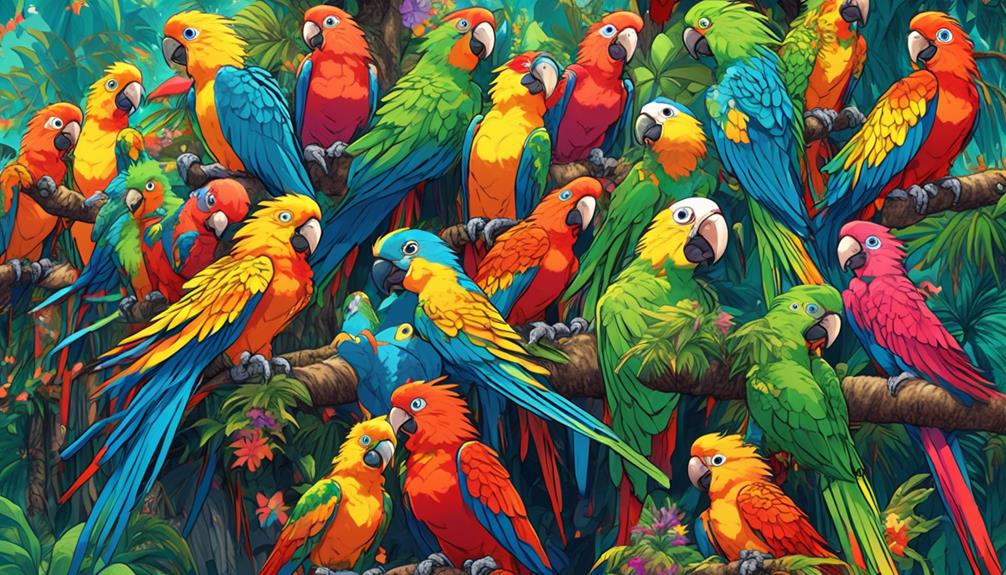
Collective Noun for Parrots
Peeling back the layers of the English language, you’ll discover a treasure trove of collective nouns, each more fascinating than the last.
Now, imagine you’re in the heart of a tropical rainforest, and you stumble upon a vibrant flurry of parrots. What would you call this gathering? This isn’t your everyday trivia question. It’s a conundrum that takes you on a journey through linguistics and avian ecology.
Stay tuned to find out more about these intriguing terms and how they came to be.
Key Takeaways
- Collective nouns describe a group or collection of things taken as a whole.
- The collective noun for parrots is ‘pandemonium’ or occasionally ‘company’.
- ‘Pandemonium’ reflects the noisy and chaotic nature of parrots, while ‘company’ alludes to their social behavior.
- Collective nouns originated in the Middle Ages and serve as a social code among the educated and elite.
Understanding Collective Nouns
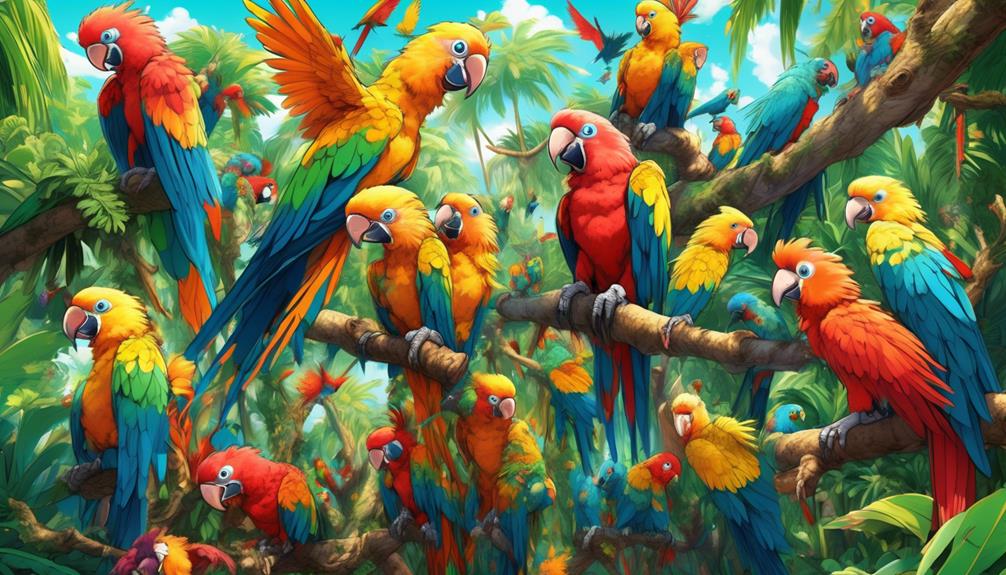
Before diving into the specific collective noun for parrots, it’s crucial that you grasp the concept of collective nouns themselves. Essentially, collective nouns are words used to describe a group or collection of things taken as a whole. These groups could be people, animals, or objects. For instance, a ‘team’ of players, a ‘herd’ of cows, or a ‘bunch’ of grapes.
Each collective noun, however, isn’t interchangeable. You can’t refer to a ‘bunch’ of players or a ‘team’ of grapes. Why? Because each collective noun is specific to the type of group it describes. This specificity is tied to the characteristics, behaviors, or traits the group shares.
In the animal kingdom, collective nouns often reflect the animal’s behavior, habitat, or characteristics. For example, a ‘school’ of fish refers to their tendency to move en masse. Similarly, a ‘murder’ of crows alludes to the bird’s ominous reputation.
When it comes to parrots, you’ll find that their collective noun is equally descriptive and fitting. But before unveiling that, it’s necessary to first understand what a collective noun is and why it’s an integral part of our language.
Parrots: A Brief Overview
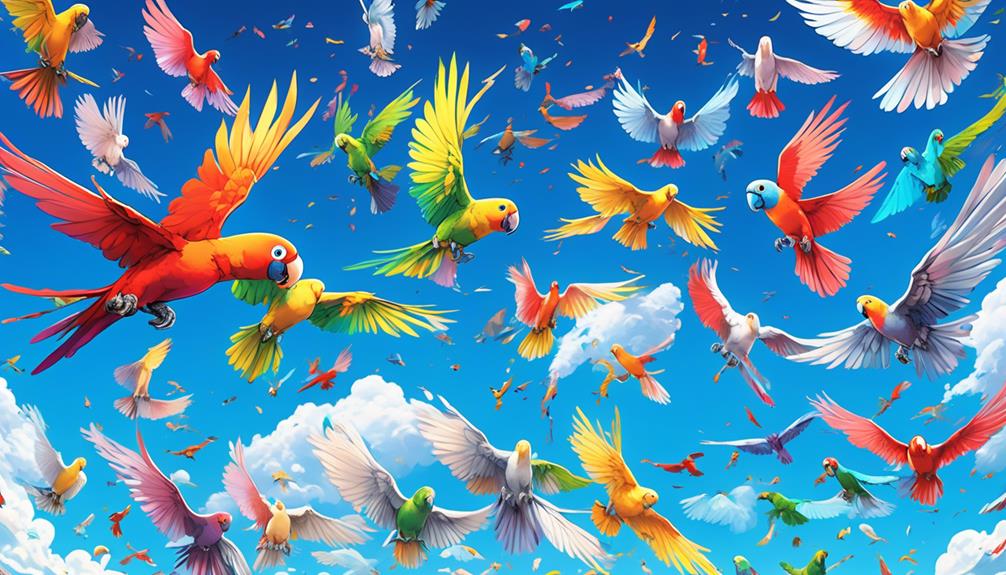
Having grasped the concept of collective nouns, let’s now turn our attention to the vibrant world of parrots, set to further enrich our understanding of their group dynamics.
Parrots, scientifically known as Psittaciformes, are one of the most diverse bird groups, with over 393 species spread across tropical and subtropical regions.
Notably, parrots share common features such as a strong, curved beak, an upright stance, strong legs, and clawed feet. They’re known for their vibrant plumage, ranging from bright blues, greens, reds, and yellows, adding a splash of color to their environments.
But they’re not just visually impressive. Parrots are highly intelligent, boasting cognitive abilities comparable to a human toddler. They’re known for their ability to mimic human speech, but this isn’t mere parroting. They can understand context, solve complex puzzles, and even exhibit signs of self-awareness.
In the wild, these social creatures often form large groups, known as a pandemonium or company of parrots. These groups provide safety, social interaction, and collective foraging opportunities.
The Collective Noun for Parrots
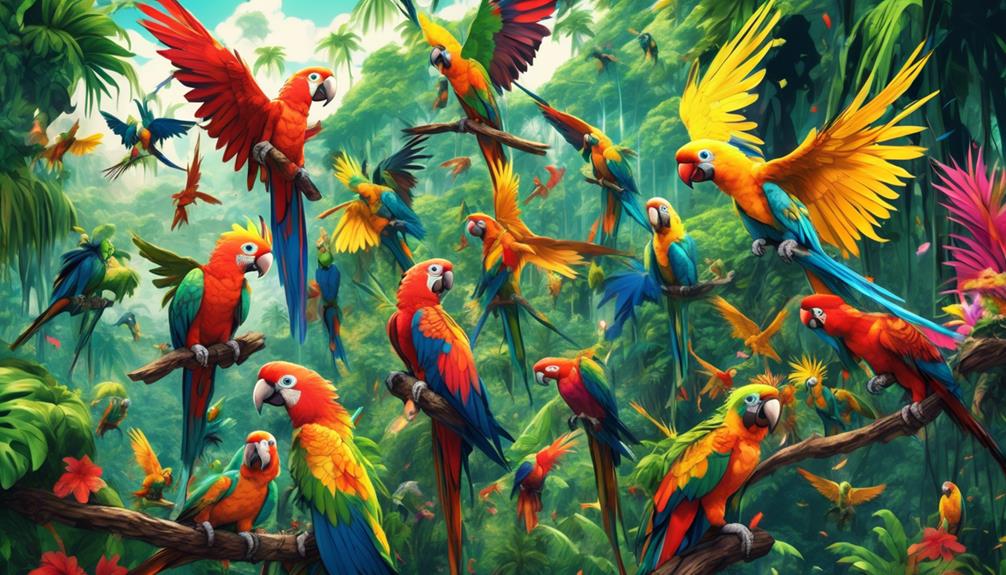
So, what do we call a group of parrots? The collective noun for parrots is a ‘pandemonium’, though occasionally, you’ll hear the term ‘company’ used. These terms reflect both the noisy, chaotic nature of parrots, as well as their social, gregarious behavior.
The term ‘pandemonium’, coined in the 17th century, is derived from Greek roots and means ‘all demons’ or ‘place of all demons’. It was used to describe the capital of Hell in John Milton’s ‘Paradise Lost’. To apply it to parrots may seem a bit harsh, but if you’ve ever heard a group of parrots squawking and screeching, you’ll understand the connection. Parrots are known for their loud, raucous calls – something that’s vital for communication in their native, dense rainforest habitats, but can be quite overwhelming in a group setting.
On the other hand, ‘company’ is a much more benign term that alludes to the social nature of parrots. Parrots are highly social animals that live in large, complex social structures. The term ‘company’ suits this aspect of their behavior perfectly.
Origin and Usage of Collective Nouns
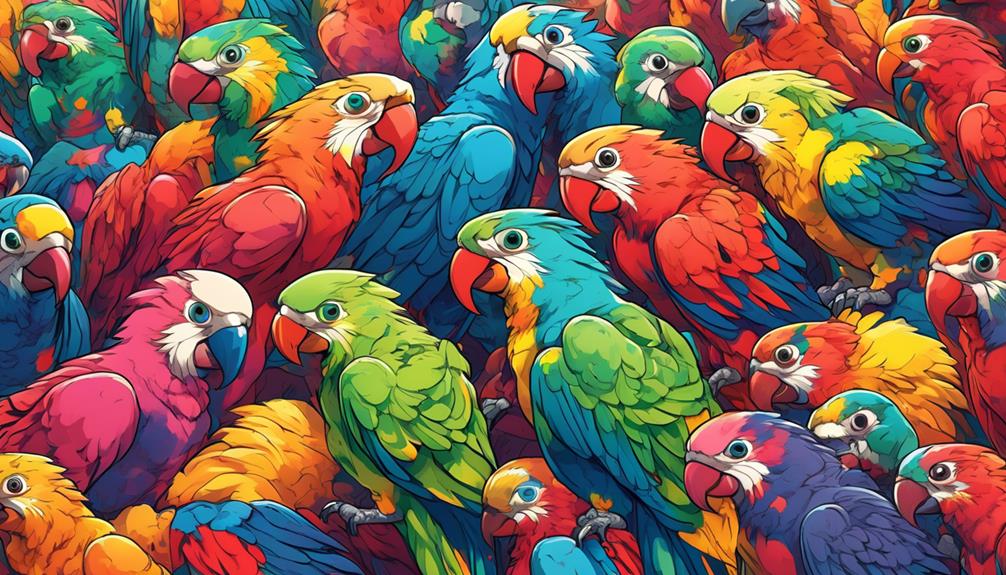
Diving into the world of collective nouns, you’ll find a fascinating history and a wide variety of usage across different cultures and languages. Collective nouns, also known as terms of venery, are believed to have originated in the Middle Ages, primarily in English and French hunting jargon. They served as a form of social code among the educated and the elite, reflecting a rich aspect of medieval culture.
You’ll discover that the usage of collective nouns isn’t universal but language-specific. In English, for instance, we use a ‘murder of crows’ or a ‘pandemonium of parrots’. But in other languages, such terminology may not exist or may differ significantly.
Appreciating collective nouns requires understanding their inherent flexibility. They’re not always used in the literal sense. Many are applied metaphorically, adding depth and color to language. Similarly, collective nouns can be created and adapted as per need, making them an evolving element of language.
In scientific discourse, their usage can help specify and classify groups of species, promoting precision and clarity. Hence, from a linguistic, cultural, or scientific lens, collective nouns offer intriguing insights.
Fun Facts About Parrot Groups
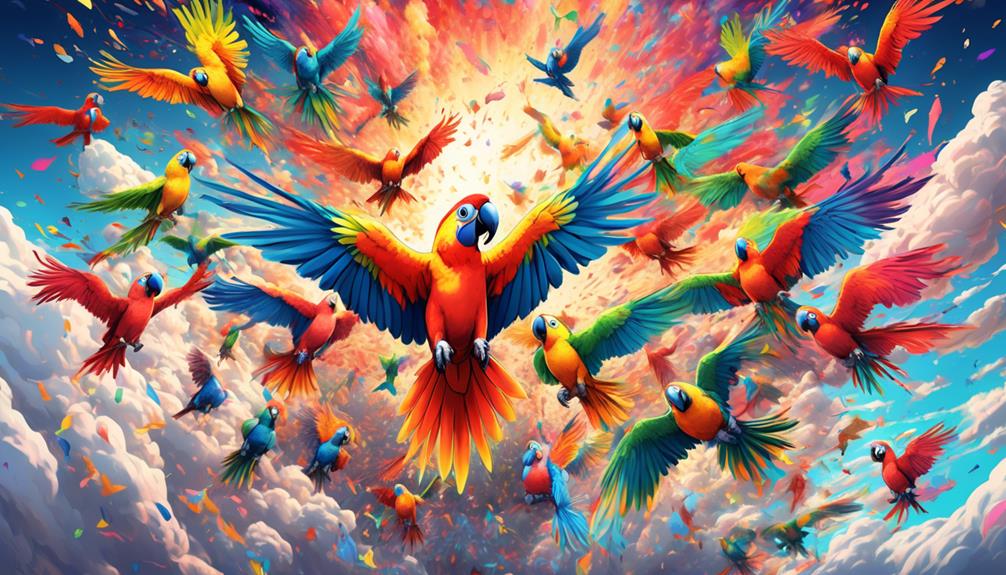
If you’ve ever observed a group of parrots, you’ll know that their vibrant colors and lively behavior make them a fascinating spectacle. But did you know that a group of parrots is often referred to as a pandemonium? This fitting term captures the loud, chaotic nature of these social creatures.
When it comes to communication, parrots are incredibly advanced. They don’t just squawk randomly, their vocalizations are often used to coordinate group activities, establish dominance, and signal alarm. In fact, studies show that parrots have dialects, varying their calls based on their group’s unique ‘language’.
Parrots also exhibit complex social structures. In a pandemonium, there’s usually a dominant pair that leads the group. The others respect their authority, following them to food sources and taking cues from their behavior.
Lastly, parrots are among the most intelligent birds. They can solve intricate puzzles and some species can even mimic human speech, a skill they use in the wild to mimic the calls of other species, potentially to avoid predators or to socialize.
Conclusion
So, you’ve journeyed through the world of collective nouns, delved into the colorful life of parrots, and discovered that a group of these vibrant birds is called a ‘pandemonium’.
We’ve explored the origins and usage of such expressive terminology, adding a dash of fun facts about parrot groups.
Remember, these collective nouns not only add richness to our language, but also bring out the unique characteristics of these fascinating creatures.
Keep exploring and keep learning!





Sign up